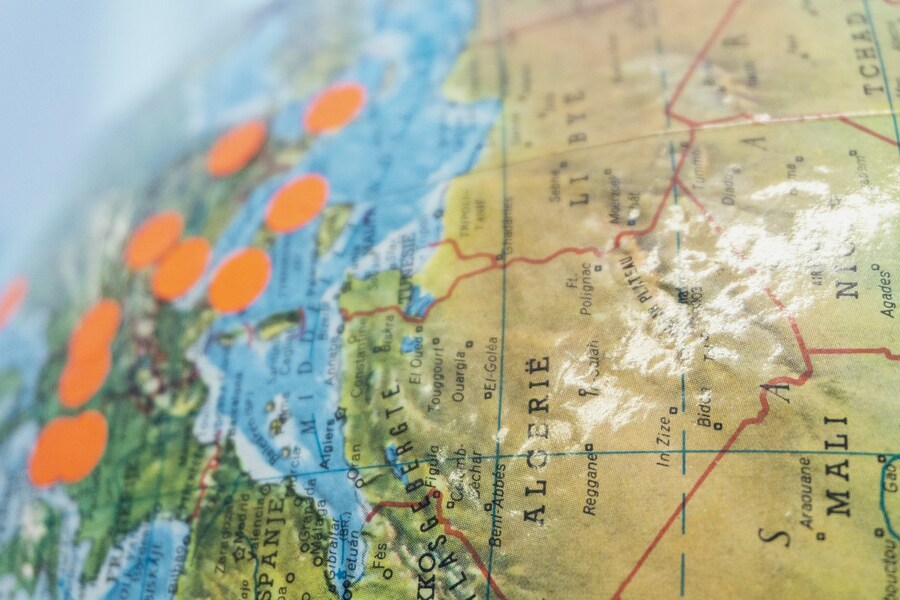The late 1950s marked the beginning of what many consider the "
So what were airlines like before deregulation?

Source: blackieshoot/Unsplash
1. Culinary delights served tableside
Before the Airline Deregulation Act of 1978, the federal government regulated airfares and determined which airlines could operate on specific routes within the United States. Since airlines couldn't compete on price, they differentiated themselves through onboard service and amenities. In those days, it was common to find complimentary Champagne served in real glassware alongside multi-course gourmet meals, including lobster, caviar, and prime rib carved tableside and served on fine china. Airlines like Pan Am even converted the entire upper deck of their Boeing 747s into a "restaurant in the skies" for first-class passengers.
2. Airborne fashion exhibits
Airlines also distinguished themselves through onboard style. Uniforms for flight attendants, who were predominantly female, became a marketing tool to appeal to male travelers. In 1964, advertising executive Mary Wells Lawrence worked on a rebranding campaign for Braniff International Airways, dubbed the "End of the Plain Plane." Other airlines, following Braniff's approach, began introducing uniforms with vibrant colors and bold prints designed by fashion designers, such as Emilio Pucci and Jean Lewis. During this era, passengers also dressed to impress, as flying was still considered a special experience.
3. Onboard smoking allowed
In the past, smoking was a common practice in society and this extended to air travel as well. While smoking was prohibited when the plane was on the ground due to concerns about fuel fumes, passengers were allowed to smoke cigarettes, pipes, and cigars during the flight. In 1973, the federal government mandated the creation of smoking and non-smoking sections on airplanes, but the smoke often traveled between the sections. Although some airlines introduced their own non-smoking policies earlier, it wasn't until 2000 that the United States government finally banned smoking on all domestic and international flights.

Source: Антон Воробьев/Unsplash
4. Spacious seating for comfort
Nowadays, the average legroom in economy class on US airlines is around 30 to 31 inches. However, in the 1960s and 1970s, the legroom in economy class was similar to what you might find in business class today. In addition, first-class passengers had access to luxurious onboard lounges and even piano bars, which provided a welcome distraction before the advent of in-flight movies and smartphones. While a few airlines, such as Emirates and Virgin Atlantic, still offer such amenities, they are now a rarity, reserved only for the highest-paying customers.
5. Increased ticket prices (and extended journey times)
Traveling by air in the mid-20th century may have had a more glamorous feel, but it definitely came at a premium price. According to a study by Compass Lexecon, the average airfare from Los Angeles to Boston in 1941 was over $4,500 in today's dollars – a far cry from the $480 fare for the same route in 2015. And that's not all, as the average travel time back then was more than 15 hours, with a dozen stops along the way.
After the Airline Deregulation Act was passed, things really started to change. New low-cost carriers like Southwest Airlines quickly gained popularity in the United States, and the increased competition helped drive airfares down significantly. In the "golden age" of air travel, flying was an experience that only the wealthy could afford, but that's certainly not the case anymore. At the start of the jet age, around 57 million passengers were taking to the skies, but that number skyrocketed to an amazing 4.5 billion in 2019. And thanks to advancements in aircraft technology, planes can now fly faster and travel much farther, opening up all kinds of new route possibilities that just weren't feasible before.
Travel ready in minutes: book convenient airport parking with ParkingNearAirports.io!

Source: Daria Nepriakhina/Unsplash
Today's air travel may lack the grandeur of the past, but affordability and accessibility have soared. However, navigating airport logistics can still be a hassle. Fortunately, finding convenient and affordable parking near the airport is easier than ever. ParkingNearAirports.io provides a user-friendly platform to compare the best airport parking deals and find airport parking coupons to save even more. So just book your spot with our smart booking platform and experience a stress-free start to your trip!






